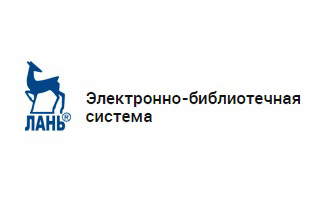 |
|
| ISSN 0536-1028 (Print) ISSN 2686-9853 (Online) |
Comparing the results of physical modeling and full-scale experiment on ore face draw in the system of block caving for flat deposits
Malinovskii E. G., Akhpashev B. A., Golovanov A. I., Gildeev A. M. Comparing the results of physical modeling and full-scale experiment on ore face draw in the system of block caving for flat deposits. Izvestiya vysshikh uchebnykh zavedenii. Gornyi zhurnal = News of the Higher Institutions. Mining Journal. 2019; 7: 34–44 (In Russ.). DOI: 10.21440/0536-1028-2019-7-34-44
Introduction. The task of ore and host rock caving method effective parameters determination in the conditions of thick flat deposits is by no means trivial due to a lack of adequate international and local experience. Optimal parameters of ore draw are therefore best determined based on physical and mathematical modeling, taking into account the data of full-scale experiments.
Research aim. Based on physical and mathematical modeling and full-scale experiment data, the present research aims to identify the patterns of rock mass draw in the context of particular mining and geological conditions of a deposit. Using the obtained data on discharge figures formation kinematics, the research aims to determine the medium flowability indicators required to create a mathematical model of ore draw in similar conditions. Research methodology includes physical modeling of the ore face draw with of the medium extraction and flowability indicators determination.
Results. Comparison of full-scale experiments results with physical modeling results revealed sufficient convergence in the areas of losses and dilution, in the similarity of broken rock draw patterns, in the draw figure formation. Base on physical modeling, the dependence between the medium flowability indicator and the discharge figure height required to mathematically simulate the draw.
Summary. The medium flowability characteristics, defined during physical modeling and full-scale experiments and incorporated in the mathematical model of draw, will allow to optimize the parameters of the development systems with ore and host rocks caving at thick flat deposits.
Key words: flat deposits; system of development; block-caving; face draw; physical modeling; full-scale experiment.
REFERENCES
1. Imenitov V. R., Kovalev I. A., Uralov V. S. Modeling ore caving and discharge. Moscow: MSU Publishing; 1961. (In Russ.) 2. Malakhov G. M., Bezukh R. V., Petrenko P. D. Theory and practice of ore discharge. Moscow: Nedra Publishing; 1968. (In Russ.) 3. Kulikov V. V. Ore discharge. Moscow: Nedra Publishing; 1980. (In Russ.) 4. Kabelko S. G., Dunaev V. A., Gerasimov A. V. Computer technology of forecast evaluation of ore drawing indicators at the development of deposits by systems with ore and rock caving. Izvestiya vysshikh uchebnykh zavedenii. Gornyi zhurnal = News of the Higher Institutions. Mining Journal. 2014; 8: 54–61. (In Russ.) 5. Bashkov V. I. Parameters analysis and design of the variant of sublevel caving development with face draw of the ore. Vestnik Kuzbasskogo gosudarstvennogo tekhnicheskogo universiteta = Bulletin of the Kuzbass State Technical University. 2015; 2 (108): 75–78. (In Russ.) 6. Savich I. N., Mustafin V. I. Perspectives of use and rationale design solutions of block (level) and sublevel face draw. Gornyi informatsionno-analiticheskii biulleten (nauchno-tekhnicheskii zhurnal) = Mining Informational and Analytical Bulletin (scientific and technical journal). 2015; S1: 419–429. (In Russ.) 7. Golik V. I., Belodedov A. A., Logachev A. V., Shurygin D. N. Improvement of parameters of production of ores at the subfloor collapse with face release. Izvestiia Tulskogo gosudarstvennogo universiteta. Nauki o zemle = Proceedings of the Tula State University. Earth Sciences. 2018; 1: 150–159. (In Russ.) 8. Ermakova I. A. Setting of flow parameters during release of ore in caving systems. Tekhnika i tekhnologiia gornogo dela = Journal of Mining and Geotechnical Engineering. 2018; 1: 4–11. (In Russ.) 9. Kvapil R. Gravity flow of granular material in hoppers and bins. Part 1. International Journal of Rock Mechanics and Mining Sciences. 1965; 2: 35–41. 10. Marano G. The interaction between adjoining draw points in free flowing materials and its application to mining. Chamber of Mines Journal. Zimbabwe. 1980; 25–32. 11. Laubscher D. H. Cave mining – the state of the art. The Journal of the South African Institute of Mining and Metallurgy. 1994; 94 (10): 279–293. 12. Rustan A. Gravity flow of broken rock – what is known and unknown. In: Proceedings MassMin 2000, Brisbane. P. 557–567. Ed. G. Chitombo. The AusIMM, Melbourne. 2000. 13. Power G. R. Modeling granular flow in caving mines: large scale physical modeling and full scale experiments. PhD thesis. The University of Queensland, Brisbane. 2004. 14. Malofeev D. E. Developing the theory of ore draw under the caved rock: monograph. Krasnoyarsk: SFU Publishing; 2007. (In Russ.)
Received 9 July 2019
An overview of deep horizons excavation lining technologies at Oktyabrsky deposit
Vokhmin S. A., Kurchin G. S., Maiorov E. S., Kirsanov A. K., Kostylev S. S. An overview of deep horizons excavation lining technologies at Oktyabrsky deposit. Izvestiya vysshikh uchebnykh zavedenii. Gornyi zhurnal = News of the Higher Institutions. Mining Journal. 2019; 7: 45–52 (In Russ.). DOI: 10.21440/0536-1028-2019-7-45-52
Introduction. Lining technologies development is a way of improving the efficiency of field development as soon as technical and economic indicators of the whole excavation construction may vary significantly depending on how correctly the lining parameters are calculated. Mine lining at ore deposits in the conditions of dynamic manifestation of rock pressure is a field that requires additional research as far as mine stability improvement is concerned.
Research aim. As soon as excavation length may currently total tens of kilometers at one mine, the problem of implementing modern technologies of mine lining ensuring economic benefit for enterprises and personnel safety becomes more relevant.
Methodology. Promising methods of mine lining were analysed based on impulse excitation damping of dynamic stress waves at the contour of excavation. Results. The paper presents mining-geological and mine engineering aspects of Oktyabrsky deposit development. A description of the most common types of mine lining is given, such as shotcrete, bolting (anchor) with or without metal grid, metal pliable lining, monolithic. A number of anchor variants have been distinguished, allowing to significantly increase their bearing capacity: combined reinforced concrete anchor; hydraulic thrust tubular anchor; resin-grouted thrust anchor; reinforced concrete anchor with double cone contour lock; seismic resistant lining.
Summary. An analysis of innovative ways of securing mine workings has shown the promise of methods based on damping the impulse effect of dynamic stress waves on the contour of the workings with the help of multilayer supports, which include a special damping layer.
Key words: mine support; deposit; mine working; plot; efficiency.
Acknowledgements: The research in the current direction is carried out by the stuff of the Underground Mining Department, FSAEI HE Siberian Federal University, under the RF President grant for the governmental support of young Russian scientists holding a PhD (МК-1178.2018.8).
REFERENCES
- Teteriuk V. A. Rich copper-nickel ore prospecting at Skalisty mine eastern flank. Norilsk: NII Publishing; 2011. (In Russ.)
- Bogdanov M. N. Standard operating procedures on sulphide ore extraction by room and pillar with hardening materials filling at Komsomolsky mine of Talnakh mine group of PJSC MMC Norilsk Nickel. Norilsk; 2004. (In Russ.)
- Trushko O. V. Types and designs of antiseismic lining a used in the development of ore deposits. Izvestiia Tulskogo Gosudarstvennogo Universiteta. Nauki o Zemle = Proceedings of the Tula State University. Earth Sciences. 2016; 1: 120–130. (In Russ.)
- Kang H. Support technologies for deep and complex roadways in underground coal mines: a review. Int. J. Coal Sci. Technol. 2014; 1: 261.
- Guofeng L. I., Manchao H. E., Guofeng Zhang, Zhigang Tao. Deformation mechanism and excavation process of large span intersection within deep soft rock roadway. Mining Science and Technology (China). 2010; 20 (1): 28–34.
- Luo Y. Research on backfill technology with U-steel support in soft rock roadway in deep mine. Chin. Q. Mech. 2009; 30(3): 488–494.
- Korobkin V. I., Peredelskii V. I. Engineering geology and environmental protection. Rostov-onDon: RSU Publishing; 2013. (In Russ.)
- Protosenia A. G., Ogorodnikov Iu. N. Deep mines working support. Moscow, Nedra Publishing; 1984. (In Russ.)
- Smirnov V. A., Protosenia A. G., Anpilov O. V., Vasiukhno M. A., Demekhin D. N. Antiseismic concrete lining method. Patent RF no. 2509893, 2014. (In Russ.)
- Dianov V. M., Eremin V. I. Steel polymer anchoring testing in the conditions of mine stress intensive manifestation. In: The items of underground works technological advancement: proceedings. Apatites; 1976: 31–36. (In Russ.)
- Vladimirskaia A. R. Soil sciences and engineering geology. St. Petersburg: Lan Publishing; 2016. (In Russ.)
- Ivanovskii E. S. Effective methods of deep mining and field exploration and rockburst protection (foreign experience). Moscow: Tsvetmet-informatsiia Publishing; 1975. (In Russ.)
- Vokhmin S. A., Kurchin G. S., Kirsanov A. K., Lobatsevich M. A., Shigin A. O., Shigina A. A. Prospects of the use of grain-size composition predicting models after explosion in open-pit mining. International Journal of Mechanical Engineering and Technology (IJMET). 2018; 9 (4): 1056–1069.
- Reichl C., Schatz M., Zsak G. World Mining Data. Vol. 34. Mineral production. Vienna; 2019. 264 p.
Received 31 May 2019
Rationale for pit hydraulic excavator design and operating parameters-lever hydraulic mechanisms
Teliman I. V. Rationale for pit hydraulic excavator design and operating parameters-lever hydraulic mechanisms. Izvestiya vysshikh uchebnykh zavedenii. Gornyi zhurnal = News of the Higher Institutions. Mining Journal. 2019; 7: 132–137 (In Russ.). DOI: 10.21440/0536-1028-2019-7-132-137
Introduction. It is shown that the main executive mechanisms of the pit hydraulic excavator (mechanisms for turning the boom, turning the handle and turning the bucket) are hydro-mechanical units in which the engines (hydraulic cylinders) are an integral part of the lever-hydraulic mechanisms. Research aim is to improve the efficiency of hydraulic excavator operation. Research methodology. The presence of a kinematic connection between the engine (hydraulic cylinder rod) and the links of the lever-hydraulic mechanism determines certain relations between the parameters of the engine and the power parameters implemented on the driven link (boom, handle and bucket) – kinematic and dynamic transfer functions. On the basis of the main mechanisms functioning simulation model, expressions for definition of transfer functions are received. Results. It is established that there are rational values of the dynamic transfer functions of the main mechanisms at which the correspondence between the energy-power parameters realized at the driven links and the mode of loading of the driven links is achieved. Summary. Synthesis of design schemes of the main mechanisms with rational values of dynamic transfer functions will allow to exclude an overload of engines and, finally, to increase energy efficiency of hydraulic excavator functioning.
Key words: quarry hydraulic excavator; main executive mechanisms; kinematic and dynamic transfer functions of mechanisms.
REFERENCES
1. Borshch-Komponiets L. V. The method of pit hydraulic excavators efficient assessment. Gornaia promyshlennost = Mining Industry Journal. 1996; 1: 29–37. (In Russ.) 2. Vinitskii K. E. The exploitation of new-generation hydraulic excavators at opencast mining. Gornaia promyshlennost = Mining Industry Journal. 1998; 1: 30–36. (In Russ.) 3. Komissarov A. P., Lautenshleiger A. A., Suslov N. M. Estimation of hydraulic excavator implements power parameters. Tiazheloe mashinostroenie = Heavy Engineering. 1991; 8: 25–29. (In Russ.) 4. Bules P. Operating efficiency of pit excavators with hydraulic drive of main mechanisms. Gornaia promyshlennost = Mining Industry Journal. 2014; 6 (118): 36–37. (In Russ.) 5. Visbek R., Kazakov V. A., Udachina T. E., Khaspekov P. R. On the effective use of hydraulic excavators. Gornaia promyshlennost = Mining Industry Journal. 1998; 5: 25–29. (In Russ.) 6. Dudczak A. Excavators: theory and design. Warsaw: PWN, 2000. 7. Geu Flores F., Kecskemethy A., Pottker A. Workspace analysis and maximal force calculation of a face-shovel excavator using kinematical transformers. In: 12th IFToMM World Congress, Besancon, June 18–21, 2007. 6 p. 8. Frimpong S., Нu Y., Chang Z. Perfomance simulation of shovel excavators for earthmoving operations. In: Summer in computer simulation conference (SCSC/03). 2003. Р. 133–138. 9. Hall A. Characterizing the operation of a large hydraulic excavator. Master Diss. School of Engineering the University of Queensland, Brisbane, Australia, 2002. 150 p. 10. Park B. Development of a virtual reality excavator simulator: a mathematical model of excavator digging and a calculation methodology. PhD Diss. Virginia Polytechnic Institute and State University. Blackburg, Virginia, USA, 2002. 223 p. 11. Rath H. Development of Hydraulic for Quarring Applications. Pt. 1. Mine & Quarry. 1987. P. 26–30. 12. Komissarov A. P., Shestakov V. S. A simulation model operation working equipment hydraulic shovel. Gornoe oborudovanie i electromehanika = Mining Equipment and Electromechanics. 2013; 8: 20–24. (In Russ.) 13. Komissarov A. P., Lagunova Iu. A., Shestakov V. S. Between constructive and regime parameters hydraulic operating equipment excavators. Gornoe oborudovanie i electromekhanika = Mining Equipment and Electromechanics. 2014; 11: 9–14. (In Russ.) 14. Pobegailo P. A. Powerful single-bucket hydraulic excavators. Implements basic geometric parameters selection at the early stages of design. Moscow: Lenand Publishing; 2014. (In Russ.) Received 12 April 2019
Technological aspects of ore preconcentration with X-ray fluorescence separation
Tsypin E. F., Ovchinnikova T. Iu., Efremova T. A., Elizarov D. B. Technological aspects of ore preconcentration with X-ray fluorescence separation. Izvestiya vysshikh uchebnykh zavedenii. Gornyi zhurnal = News of the Higher Institutions. Mining Journal. 2019; 7: 101–112. DOI: 10.21440/0536-1028- 2019-7-101-112
Object and aim of research. By eliminating coarse tailings, preconcentration may increase the content of valuable components in ore at the input of the processing plant with or without throughput reduction. The output of preconcentration tailings therefore determines the reduction level of operating costs. Technological and economic benefit may be significant with high prime cost of deep processing; it is connected with the costs of power-consuming processes of crushing, grinding, dewatering, as well as for reagents and material.
Research aims to study main technological factors which influence the effectiveness of ore preconcentration with X-ray fluorescence separation.
Methodology. The present research uses technological calculation of preconcentration with X-ray fluorescence separation (XRFS) at various granulometric characteristics of Run-of-Mine Ore and crushed ore, inhomogeneity analysis of components content in a lump with material size variation, experimental research on the study of sorted classes number influence on the indicators of separation with the use of XRFS in preconcentration technologies.
Results and the scope of results. Technological indicators of preconcentration with X-ray fluorescence separation are calculated for various granulometric characteristics of ore which comes to concentration. The obtained data allow to recommend XRFS in maximum size. The influence is revealed of the number of the sorted sorted classes on the total yield of preconcentration tailings. Maximum size of the concentrated material should be taken into account when choosing the number of sorted classes. Research results may be applied when developing the technologies of mineral raw material preconcentration with X-ray fluorescence separation.
Summary. The effectiveness of ore separating system operation is largely determined by the quality of ore preparation by granulometric composition both at actual mining (drilling and blasting operations) and crushing-screening at ore separating systems. The proposed approach allows to quantitatively estimate the influence of the number of sorted classes on the effectiveness of preconcentration with X-ray fluorescence separation and explain the choice of the number and the boundaries of sorted classes sizes.
Key words: preconcentration; X-ray fluorescence separation; ore sorting system; technology; inhomogeneity in a lump; granulometric characteristics; the number of the sorted classes.
REFERENCES
- Tsypin E. F. Preliminary processing. Izvestiya vysshikh uchebnykh zavedenii. Gornyi zhurnal = News of the Higher Institutions. Mining Journal. 2001; 4–5: 82–104.
- Tsypin E. F. Dressing in the stages of ore preparation. Ekaterinburg: UrSMU Publishing; 2015. (In Russ.)
- Maksimov I. I. XXVII International Mineral Processing Congress. Part 1. Obogashchenie Rud = Mineral Processing. 2015; 3: 3–11. (In Russ.)
- Maksimov I. I. XXVII International Mineral Processing Congress. Part 2. Obogashchenie Rud = Mineral Processing. 2015; 6: 50–58. (In Russ.)
- Gleeson D. Preceding processing // International Mining. March, 2019. P. 82–87.
- Moore P. Processing performance // International Mining. January, 2018. P. 66–73.
- Härkki K. Overcoming sustainability challenges of future concentrator plants. Proceedings of the XXVII International Mineral Congress. Santiago, Chile, 2014. Chapter 1. Plenary Presentations. P. 2–22.
- Fedorov Iu. O., Katser I. U., Korenev O. V., Korotkevich V. A., Tsoi V. P., Kovalev P. I., Fedorov M. Iu., Popovskii N. S. Experience and practice of X-ray radiometric ore separation. Izvestiya vysshikh uchebnykh zavedenii. Gornyi zhurnal = News of the Higher Institutions. Mining Journal. 2005; 5: 21–37. (In Russ.)
- Kolacz J. Sensor based sorting with signal pattern recognition: the new powerful tool in mineral processing // Proceedings of the XXVII International Mineral Congress. Santiago, Chile, 2014. Chapter 16. Classification, screening and sorting. P. 106–115.
- Litvinenko V. G., Sukhanov R. A., Tirskii A. V., Tupikov D. G. Improvement of the technology of X-ray radiometric concentration of uranium ores. Gornyi zhurnal = Mining Journal. 2003; 8: 54–58. (In Russ.)
- Kolesaev V. B., Litvinenko V. G., Kultyshev V. I. Combined technology for processing of poor uranium ore. Gornyi zhurnal = Mining Journal. 2008; 8: 50–53. (In Russ.)
- Sanakulov K. S., Rudnev S. V. Complex of X-ray radiometric dressing of sulphide ore at Kokpatas deposit. Gornyi vestnik Uzbekistana = Mining News of Uzbekistan. 2010; 1 (40): 3–7. (In Russ.)
- Rakhmeev R. N., Voiloshnikov G. I., Fedorov Iu. O., Chikin A. Iu. Results of the experiments over the X-ray radiometrical separator for diamond-bearing concentrates processing. Izvestiya vysshikh uchebnykh zavedenii. Gornyi zhurnal = News of the Higher Institutions. Mining Journal. 2017; 5: 80–88. (In Russ.)
- Sanakulov K. S., Rudnev S. V., Kantsel A. V. Regarding the possibility of mining Uchquloch deposit with the use of lead-zinc ore X-ray radiometric separation technology. Gornyi vestnik Uzbekistana = Mining News of Uzbekistan. 2011; 1 (44): 17–20. (In Russ.)
- Shemiakin V. S., Skopov S. V., Mankovskii R. V., Krasilnikov P. A., Mamonov R. S. Preliminary concentration of quartz raw material at Kyshtym deposit. Izvestiya vysshikh uchebnykh zavedenii. Gornyi zhurnal = News of the Higher Institutions. Mining Journal. 2016; 8: 74–79. (In Russ.)
- Efremova T. A. The influence of the size of classes on the boundary value of the analytical parameters of X-ray fluorescence separation of polymetallic ore. In: Ural mining school to the regions: proceedings of the scientific and practical conference for young scientists and students. Ekaterinburg: UrSMU Publishing; 2018. p. 266–267. (In Russ.)
- Kozin V. Z. Ore dressability research. Ekaterinburg: UrSMU Publishing; 2016. (In Russ.)
- Mokrousov V. A., Golbek G. R., Arkhipov O. A. Theoretical fundamentals of radiometric dressing of radioactive ore. Moscow: Nedra Publishing; 1968. (In Russ.)
- Latyshev O. G. Methods and means of studying high-speed processes. Ekaterinburg: UrSMU Publishing; 2007. (In Russ.)
Received 4 July 2019
Developing the technology of mine stowing with processing tailings based hardening blends
Volkov E. P., Anushenkov A. N. Developing the technology of mine stowing with processing tailings based hardening blends. Izvestiya vysshikh uchebnykh zavedenii. Gornyi zhurnal = News of the Higher Institutions. Mining Journal. 2019; 7: 5–13. DOI: 10.21440/0536-1028-2019-7-5-13
Introduction. Large-scale implementation of mine stowing method is a relevant tendency to improve the technology of underground mining.
Research aims to develop and propose an effective technology of mine stowing with processing tailings based hardening blends.
Research methods include experimental investigation of mine stowing technology with processing tailing based hardening blends and the determination of basic characteristics of an artificial massif.
Analysis. The present work provides the results of research on conventional technologies of hardening blends preparations and the one developed by the authors; the results prove the effectiveness of hydropercussion-cavity activation of solution materials.
Summary. The analysis of the stowing manufacturing technologies under investigation has shown the effectiveness of the developed method based on the hydropercussion-cavity treatment of hardening blends materials.
Key words: underground mining; stowing; hardening blends; processing tailings; hydropercussioncavity blending machine
REFERENCES
1. Bitimbaev M. Zh., Krupnik L. A., Shaposhnik Iu. N. Theory and practice of stowing when developing mineral deposits. Almaty: Dauir Publishing; 2012. (In Russ.)
2. Krupnik L. A., Shaposhnik Iu. N., Shaposhnik S. N., Tursunbaeva A. K. Technology of stowing at mining enterprises of Kazakhstan. Fiziko-tekhnicheskie problemy razrabotki poleznykh iskopaemykh = Journal of Mining Science. 2013; 1: 95–105. (In Russ.)
3. Chen G. Y. and Huang W. H. Investigation on blending CFB ash with blast furnace slag as replacement for Portland cement used in concrete binders. Adv. Mater. Res. 2013; 723: 623–629.
4. Kroupnik L., Abdykalykova R., Elemesov K., Sładkowski A., Shaposhnik Yu., Shaposhnik S. Combined pipeline transport for hardening filling Mixtures. VIII Int. Conf. "Transport Problems". Сatowice, Poland, 2016. Р. 258–265.
5. Deng D. Q., Liu L., Yao Z. L., Song K. I., and Lao D. Z. A practice of ultra-fine tailings disposal as filling material in a gold mine. J. Environ. Manage. 2017; 196: 100–109.
6. Hu S. G., Lu X. J., Niu H. L. and Jin Z. Q. Research on preparation and properties of backfilling cementation material based on blast furnace slag. Adv. Mater. Res. 2011; 158: 189–196.
7. Krupnik L. A., Shaposhnik Iu. N., Shaposhnik S. N. The development of backfilling technology in terms of Novo-Leninogorsky mine planning. Gornyi informatsionno-analiticheskii biulleten (nauchnotekhnicheskii zhurnal) = Mining Informational and Analytical Bulletin (scientific and technical journal). 2015; 8: 25–32. (In Russ.)
8. Ke X., Zhou X., Wang X., Wang T., Hou H., and Zhou M. Effect of tailings fineness on the pore structure development of cemented paste backfill. Constr. Build. Mater. 2016; 126: 345–350.
9. Grebenkin S. S., Melnik V. V. Advanced technologies of underground mining of mineral deposits reserves with goaf stowing. Donetsk: VIK Publishing; 2013. (In Russ.)
10. Nikolaev E. I., Gultiaev V. G., Kozhbanov K. Kh. New technology of preparing hardening blend at Orlovsky mine. Gornyi zhurnal = Mining Journal. 2002; 5: 58–60. (In Russ.)
11. Krupnik L. A., Shaposhnik Iu. N., Shaposhnik S. N. The prospects of stowing transportation to the shaft at mining enterprises in Kazakhstan. Gornoe oborudovanie i elektromekhanika = Mining Equipment and Electromechanics. 2015; 4: 21–28. (In Russ.)
12. Volkov E. P., Anushenkov A. N., Guzanov P. S., Lytneva A. E. Stowing solutions based on ore processing gangue in the systems of Norilsk industrial region deposits underground mining systems. Gornyi zhurnal = Mining Journal. 2015; 6: 85–87. (In Russ.)
13. Balabyshko A. M. Rotor devices with flow modulation and their application in the industry. Moscow: Nedra Publishing; 1992. (In Russ.)
14. Volkov E. P., Stovmanenko A. Iu., Anushenkov A. N. Mixing-activating device for liquid media. Patent RF no. 2550609; 2015.
15. Anushenkov A. N., Volkov E. P., Stovmanenko A. Iu. A method of preparing cast hardening stowing blends based on the finely-dispersed filler. Patent RF no. 2607329; 2017.
Received 2 July 2019

This work is licensed under a Creative Commons Attribution 4.0 International License.







